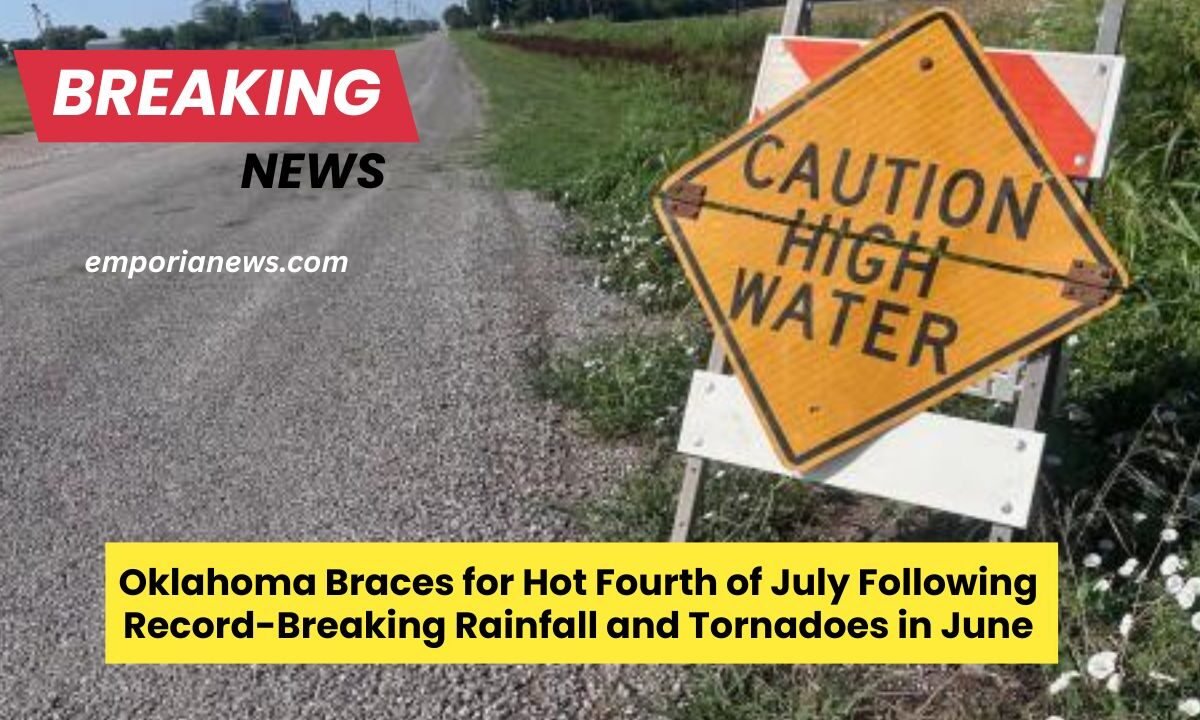Oklahomans should prepare for a scorching Fourth of July, as State Climatologist Gary McManus predicts a dramatic temperature rise following a wet and stormy June.
After a month marked by historic rainfall and tornado activity, the state is entering July with concerns of a potential heatwave, though recent rainfall may help mitigate its severity.
From Soaking Rains to Soaring Heat
Temperatures will begin to climb heading into the holiday, with Friday expected to offer mild highs in the 80s before the real heat sets in.
“This Friday will be a gift, mostly highs in the 80s,” he said, noting that heat index values will push into the 90s as the week progresses.
“All this week, not bad. Not bad at all,” he added optimistically, though he warned that the following week would likely bring less favorable conditions.
Despite recent intense storms, McManus anticipates a decrease in rainfall heading into the holiday week. “It does look like the rain will calm down just a bit,” he noted.
However, he cautioned that firework displays may face disruption, emphasizing that weather forecasts remain subject to change.
June 2025: A Month of Weather Extremes
The past month saw Oklahoma battered by heavy rain and tornadoes, ultimately ranking as the sixth-wettest June on record.
The state averaged 7.22 inches of rainfall, nearly 3 inches above the norm. This excess precipitation was accompanied by a surge in tornado activity, with 25 preliminary tornadoes recorded, just three shy of the record set in June 1995.
Yet, amid the chaos, June brought a welcome reprieve: the complete elimination of drought for the first time in nearly six years.
According to McManus, this milestone was confirmed by the U.S. Drought Monitor, which declared Oklahoma drought-free (D1-D4) as of June 3.
By the following week, even abnormally dry conditions (D0) had vanished. The state had been in some stage of drought since August 2021, peaking in October 2022, when 86% of Oklahoma faced extreme or worse drought conditions.
Tornadoes Return in Force
The month also saw a sharp increase in tornado activity, with 25 confirmed tornadoes contributing to a year-to-date total of 86—well above Oklahoma’s annual average of 58.8.
While many of these were weaker EF0 or EF1 tornadoes, several caused significant structural damage.
- On June 7, an EF1 tornado struck McAlester, damaging homes, businesses, and downtown buildings.
- The strongest tornado of the month, an EF2, touched down near Arnett in Ellis County, carving a 12-mile path into Roger Mills County and spanning a width of at least 500 yards.
Overflowing Lakes and Saturated Ground
The record-breaking rainfall in April, May, and June has led to overfilled reservoirs and saturated soils throughout the state.
“Some lakes are now more than 20 feet above their conservation pool,” McManus reported, a significant shift from the drought-stricken conditions that had persisted for years.
Even typically arid regions like southwest Oklahoma have seen lakes approach normal water levels. The Oklahoma Mesonet’s soil sensors show that the top two feet of soil across much of the state are near saturation.
According to McManus, this abundant soil moisture could help moderate rising temperatures in early July. “To have that soil moisture up as we get into July… is always a great thing because that tends to keep us cooler,” he noted.
Forecast: Heat Rising, But Drought Not Expected (Yet)
Although temperatures are expected to rise throughout July, the Climate Prediction Center (CPC) does not anticipate new drought development through the month’s end.
Oklahoma faces slightly increased odds of above-normal temperatures, but precipitation levels remain uncertain, with equal chances of being above, near, or below average.
McManus urged caution, noting that rapid drought conditions can still form if heat increases without accompanying rain, especially during July and August.
He warned this could turn the state into a “gigantic easy bake oven”. However, the potential for rain and cloud cover in the coming week offers hope for avoiding the dreaded “heat dome”.
As Oklahoma transitions from an exceptionally wet June into a hot July, residents should stay informed and prepared.
While the drought has temporarily lifted, the risk of heatwaves and rapidly changing weather remains.
With a combination of soaked soils, high humidity, and elevated temperatures, the Fourth of July could bring both celebration and challenges.
Stay weather-aware and take precautions as the holiday approaches.




